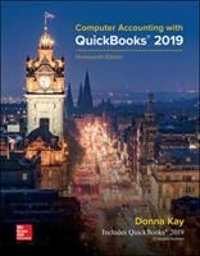Hobson acquires 40 percent of the outstanding voting stock of Stokes Company on January 1, 2012, for $210,000 in cash. The book value of Stokes?s net assets on that date was $400,000, although one of the company?s buildings, with a $60,000 carrying value, was actually worth $100,000. This building had a 10-year remaining life. Stokes owned a royalty agreement with a 20-year remaining life that was undervalued by $85,000. Stokes sold inventory with an original cost of $60,000 to Hobson during 2012 at a price of $90,000. Hobson still held $15,000 (transfer price) of this amount in inventory as of December 31, 2012. These goods are to be sold to outside parties during 2013. Stokes reported a loss of $60,000 for 2012, $40,000 from continuing operations and $20,000 from an extraordinary loss. The company still manages to pay a $10,000 cash dividend during the year. During 2013, Stokes reported a $40,000 net income and distributed a cash dividend of $12,000. It made additional inventory sales of $80,000 to Hobson during the period. The original cost of the merchandise was $50,000. All but 30 percent of this inventory had been resold to outside parties by the end of the 2013 fiscal year. Prepare all journal entries for Hobson for 2012 and 2013 in connection with this investment. Assume that the equity method is applied. 
Hobson acquires 40 percent of the outstanding voting stock of Stokes Company on January 1, 2012, for $210,000 in cash. The book value of Stokes's net assets on that date was $400,000, although one of the company's buildings, with a $60,000 carrying value, was actually worth $100,000. This building had a 10year remaining life. Stokes owned a royalty agreement with a 20year remaining life that was undervalued by $85,000. Stokes sold inventory with an original cost of $60,000 to Hobson during 2012 at a price of $90,000. Hobson still held $15,000 (transfer price) of this amount in inventory as of December 31, 2012. These goods are to be sold to outside parties during 2013. Stokes reported a loss of $60,000 for 2012, $40,000 from continuing operations and $20,000 from an extraordinary loss. The company still manages to pay a $10,000 cash dividend during the year. During 2013, Stokes reported a $40,000 net income and distributed a cash dividend of $12,000. It made additional inventory sales of $80,000 to Hobson during the period. The original cost of the merchandise was $50,000. All but 30 percent of this inventory had been resold to outside parties by the end of the 2013 fiscal year. Prepare all journal entries for Hobson for 2012 and 2013 in connection with this investment. Assume that the equity method is applied. Problem 30 On July 1, 2011, Gibson Company acquired 75,000 of the outstanding shares of Miller Company for $12 per share. This acquisition gave Gibson a 35 percent ownership of Miller and allowed Gibson to significantly influence the investee's decisions. As of July 1, 2011, the investee had assets with a book value of $2 million and liabilities of $400,000. At the time, Miller held equipment appraised at $150,000 above book value; it was considered to have a seven-year remaining life with no salvage value. Miller also held a copyright with a five-year remaining life on its books that was undervalued by $650,000. Any remaining excess cost was attributable to goodwill. Depreciation and amortization are computed using the straight-line method. Gibson applies the equity method for its investment in Miller. Miller's policy is to pay a $1 per share cash dividend every April 1 and October 1. Miller's income, earned evenly throughout each year, was $550,000 in 2011, $575,000 in 2012, and $620,000 in 2013. In addition, Gibson sold inventory costing $90,000 to Miller for $150,000 during 2012. Miller resold $80,000 of this inventory during 2012 and the remaining $70,000 during 2013. a. Prepare a schedule computing the equity income to be recognized by Gibson during each of these years. b. Compute Gibson's investment in Miller Company's balance as of December 31, 2013







